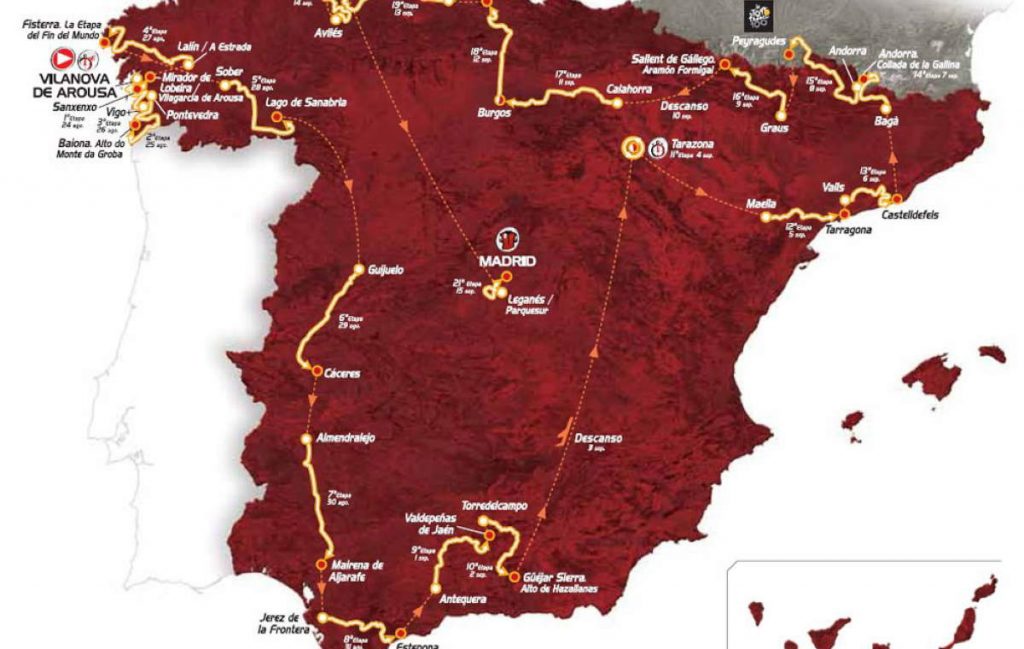Vuelta a España 2013 stage 7 is a flat stage between Almendralejo and Mairena del Aljarafe. The length of the course is 195.5 km.
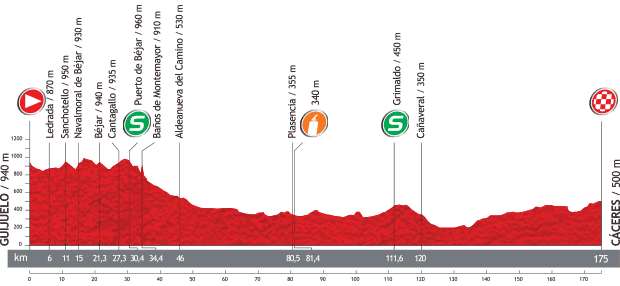
Previous Stage: Vuelta a España 2013 Stage 6 details
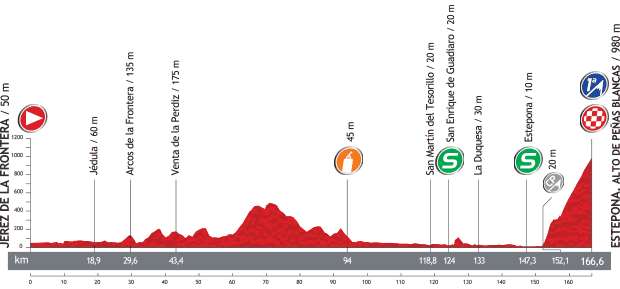
Next Stage: Vuelta a España 2013 Stage 8 details
Vuelta a España 2013 Stage 7 quick info
- DATE August 30, Friday
- STAGE TYPE Plain
- START-FINISH Almendralejo (365 m) > Mairena del Aljarafe (75 m)
- STAGE DISTANCE 195.5 km
Vuelta a España 2013 Stage 7 profile
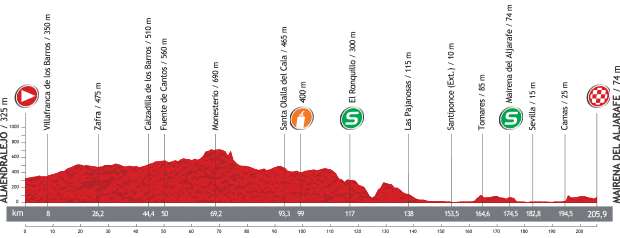
Last kilometers
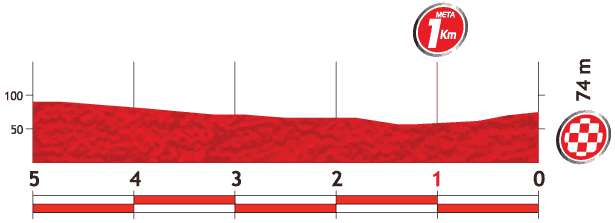
Stage map
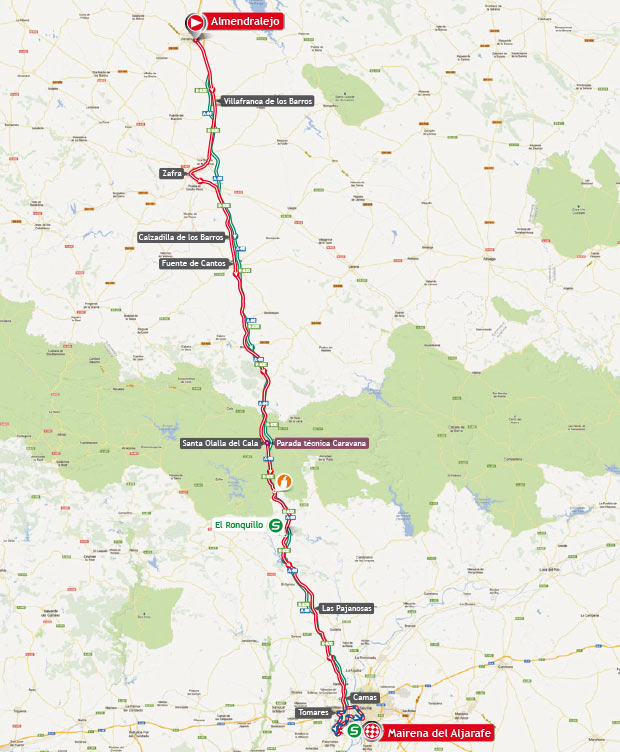
Start: Almendralejo
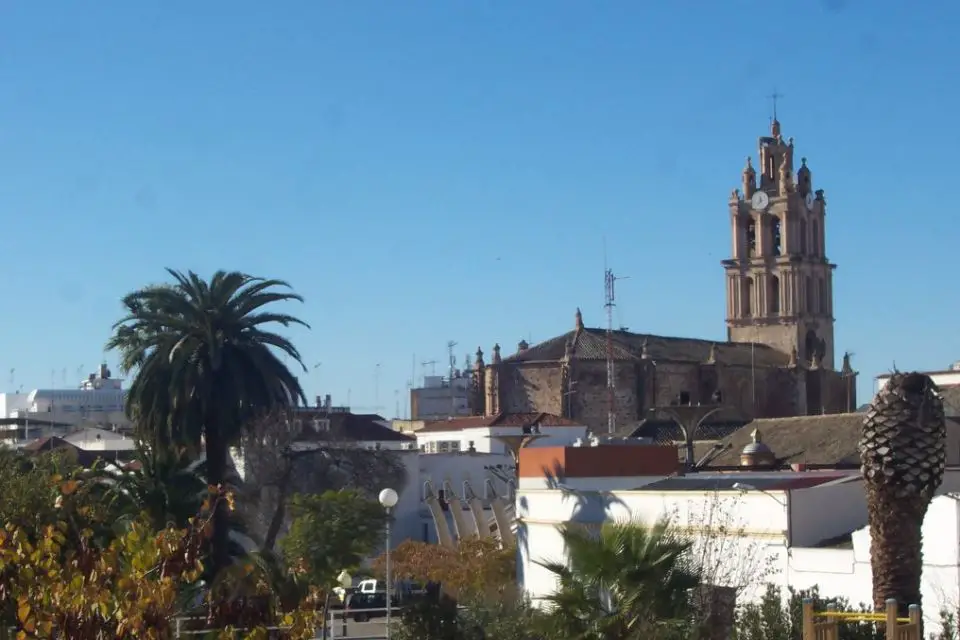
Almendralejo is a town in the province of Badajoz, Extremadura, Spain. It is situated 59 km south-east of Badajoz, on the main road and rail route between Mérida and Seville. As of 2010, it has a population of 33,975. There was a battle and massacre here in 1936 during the Spanish Civil War.
Sights include the Church of the Purification, finished in 1515, in Gothic style.
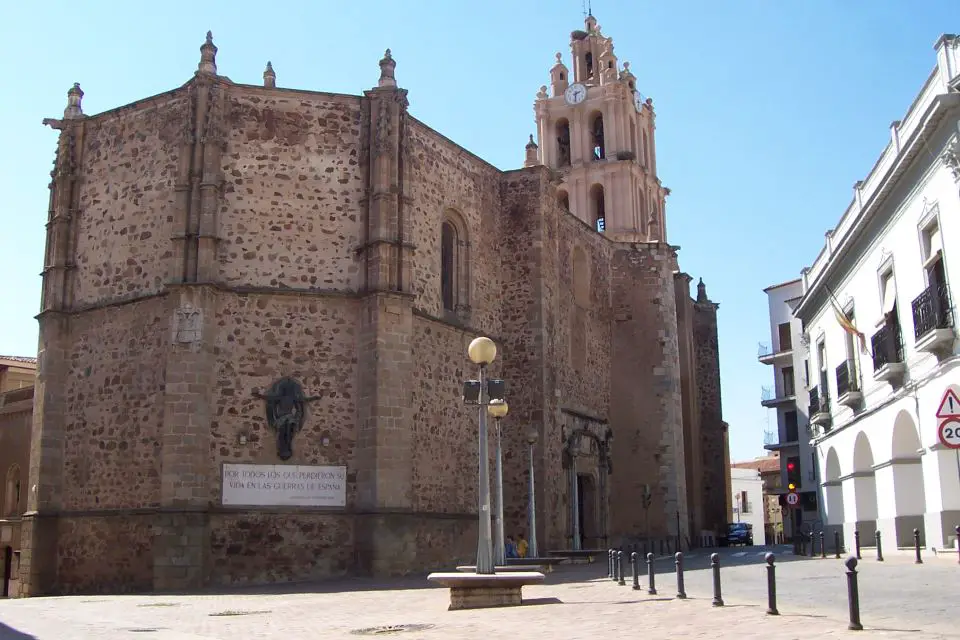
Finish: Mairena del Aljarafe
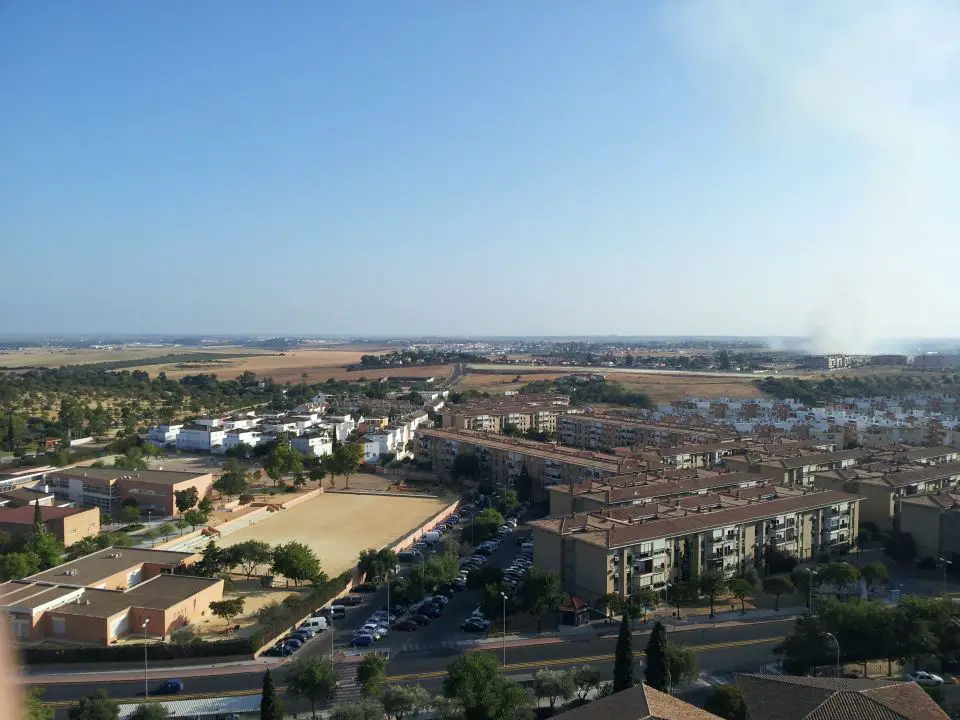
Mairena del Aljarafe is a municipality in the province of Seville, Spain.
Mairena del Aljarafe was born as such in times of Muslim rule and receives the name of ‘Maharana’, which comes to mean ‘Herd of Shepherds’ since the Arabs made these lands a farmhouse.
However, it is known that those were not the first settlers of the term; the Romans also settled here attracted by the fertility of the land to grow their crops and carry out their agricultural tasks. It is for this reason that it is deduced that these lands were exploited since ancient times since, in addition, the Aljarafe region received the nickname of ‘La huerta de Hércules’ thanks to the richness of the agricultural land.
The Arabs lived in Mairena del Aljarafe until approximately the middle of the 13th century, at which time King Fernando III, better known as San Fernando, conquered the Aljarafe region, thus becoming Christian territory. It is from this moment when the land is distributed, which, for the most part, will become agricultural holdings dedicated to the cultivation of olive groves. The term belonged then to the jurisdiction of Palomares del Río, a dependency that existed until the seventeenth century and that brought with it disputes between the residents of both towns.
In 1639, Mairena was already its own entity and it was Philip IV of Spain who sold his land to the Count-Duke of Olivares. Upon his death, the town will be the subject of disputes between the candidates for ownership, disputes that are resolved with the appointment of the Princes of Astillano as beneficiaries. Later, it will be the Casa de Alba that owns the land. Despite being considered a town with its own entity at that time, the struggle between the inhabitants of the two municipalities continued until the 19th century, when it exceeded Palomares del Río in the number of inhabitants.
During the 18th century, Mairena was mainly in the hands of various religious communities, as it happened in other towns in Aljarafe. The Parish Church of San Ildefonso dates from this same century. Contemporary Age: the consolidation of Mairena del Aljarafe At the beginning of the 19th century the population of Mairena called a commission to ask the Crown for the concession of villazgo in exchange for a donation of 1,500 ducats. It will not be until 1840 when the Council of the town acquires some powers, then having an independent City Council.
‘Mairena del Aljarafe’ will be the toponym that the municipality later acquires and the one that lasts to this day. The second name of this city, ‘Aljarafe’, also comes from Arabic semantics and means ‘rooftop’, ‘elevation’ or ‘discover something from a high place’.
Sources
- La Vuelta official website
- Mairena del Aljarafe official website
- BikesOnline Carlsbad: Your Premier Cycling Destination in San Diego County - June 15, 2025
- Top 19 fastest Paris-Roubaix editions - April 14, 2025
- Fausto Coppi in Africa [A Very Rare Photo] - January 4, 2025
